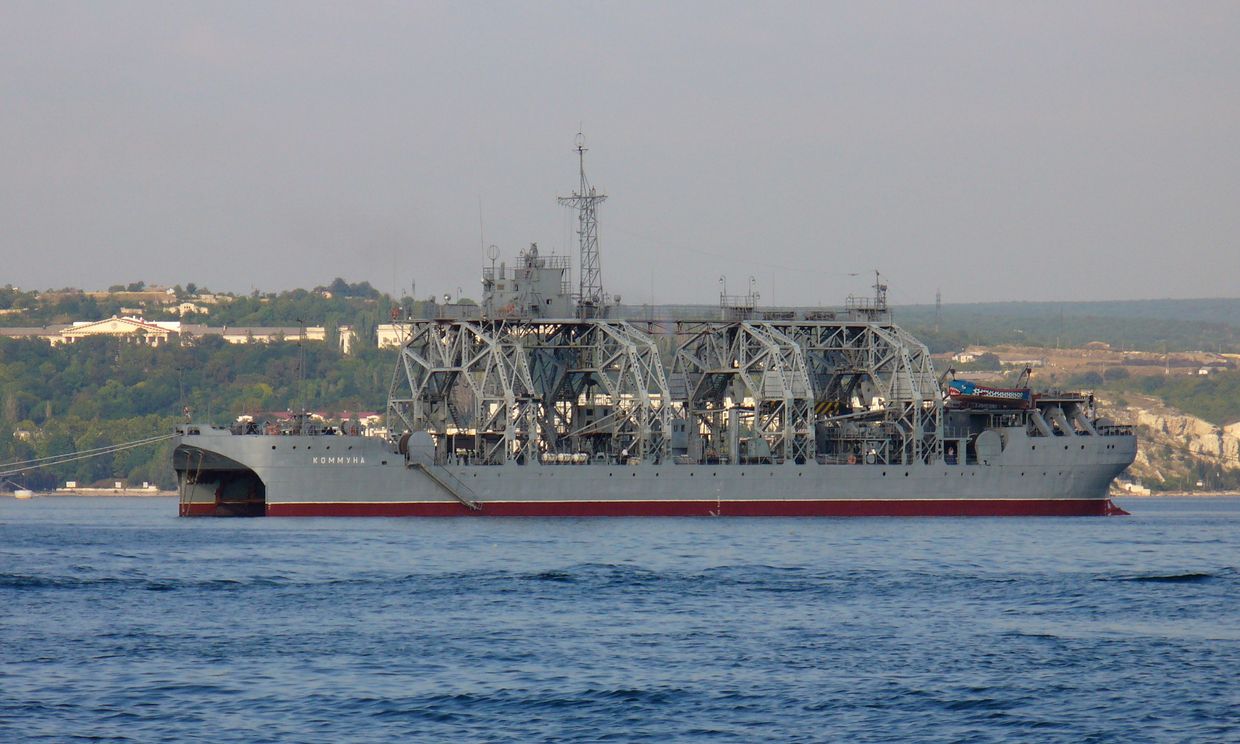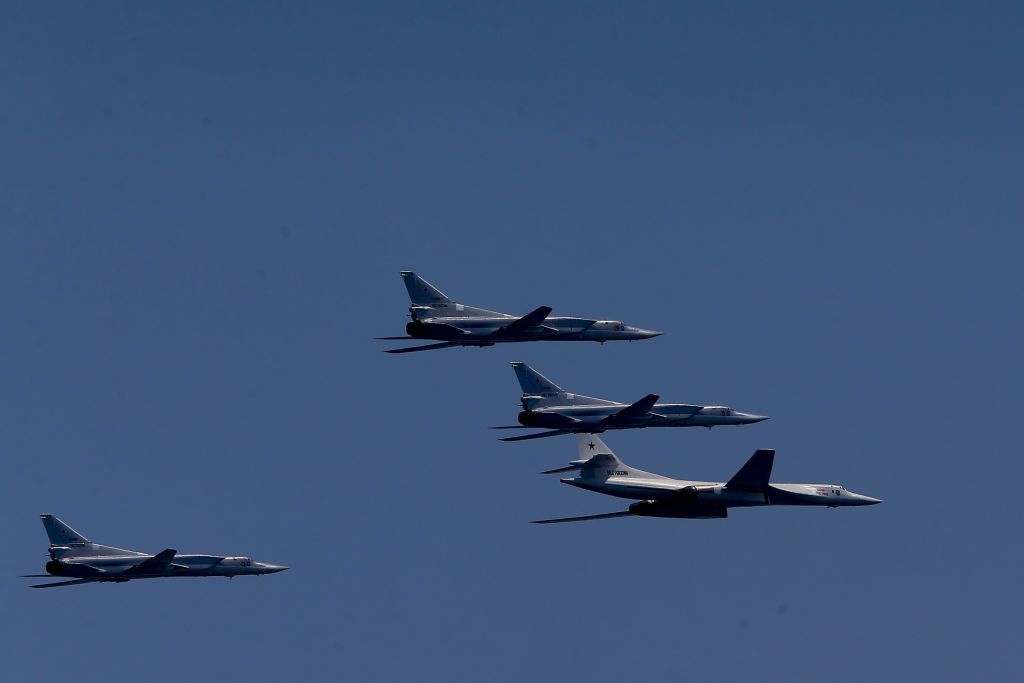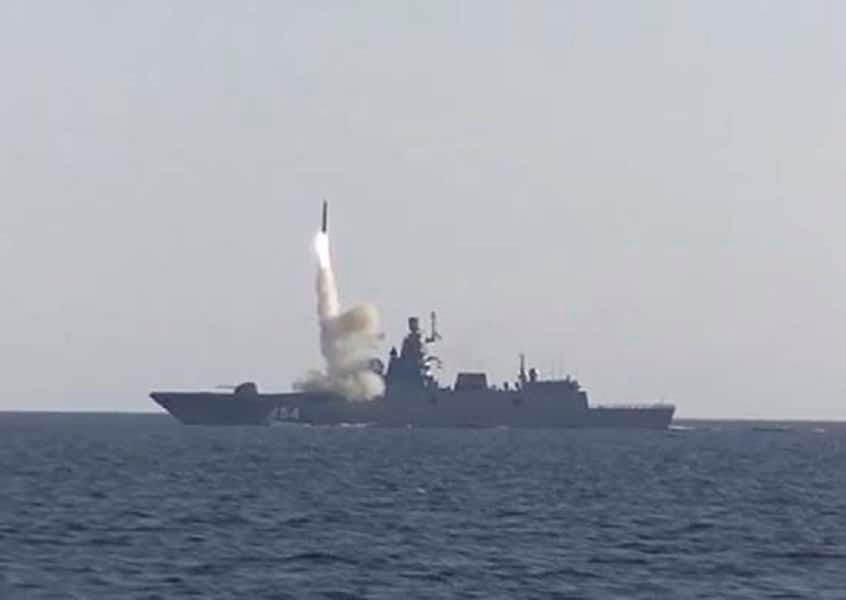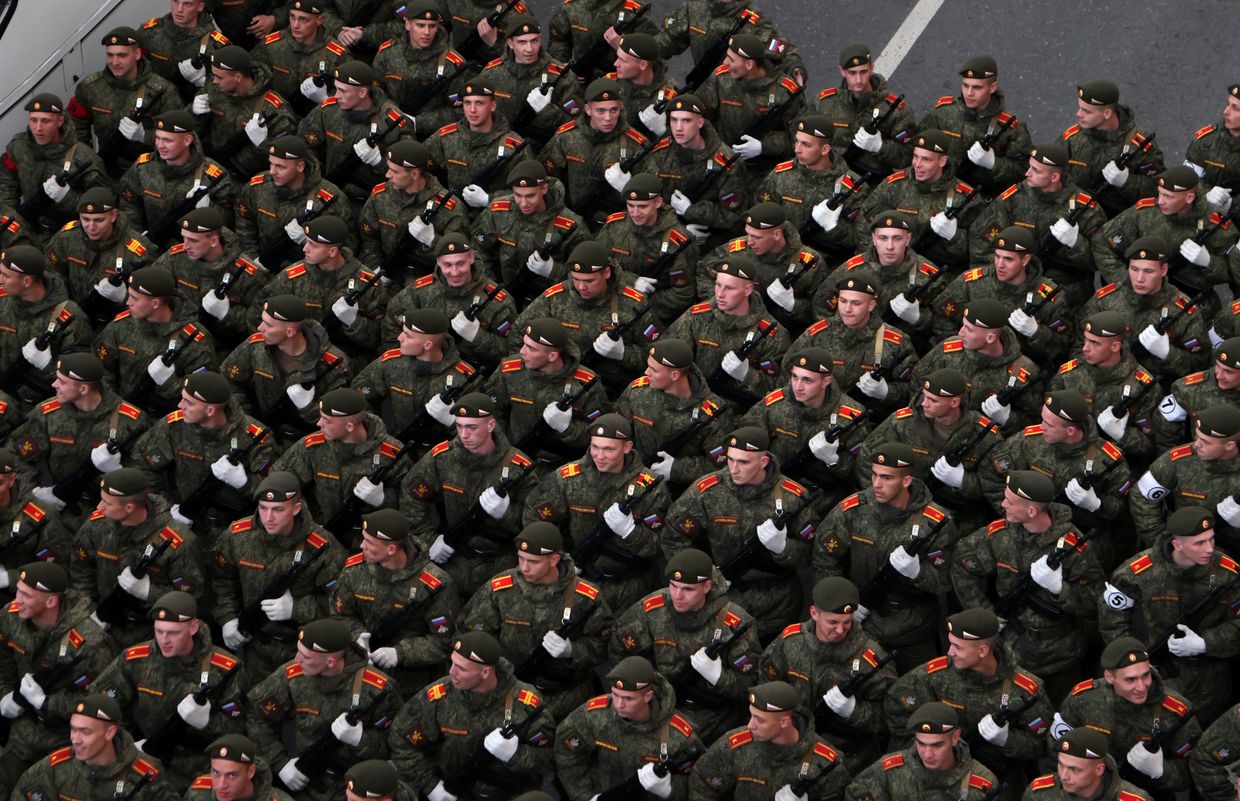Editor's note: This investigation is a collaboration between the Kyiv Independent and partners, including The Investigative Desk, Lighthouse Reports, and Follow the Money (Netherlands), El Diario (Spain), Delfi (Estonia), and Libération (France).
Key findings:
- Over a year into Russia's full-scale war, neither Ukraine nor the EU has implemented any solid plans for ammunition production ramp-up
- EU member states' governments hardly sign any long-term contracts with producers, while the "wait-and-see" arms industry is reluctant to take financial risks
- Ukraine's arms makers also complain about a lack of state support yet scale up production under existing capacities anyway
- Ukraine uses from 3-10 times (depending on the intensity of fighting) less ammunition than Russia does, but its ammunition expenditure is still several times higher than Europe's production rates
- National protectionism of member states and the bureaucracy of the EU prevented rapid decision-making to tackle ammunition shortages
- The lack of unified ammunition types in the EU forces soldiers on the front line to alter their ammunition and adapt weapons, which can delay or jeopardize operations
As Ukraine was throwing all its forces into counteroffensive operations in northeastern Kharkiv and southern Kherson oblasts last fall, soldiers defending the eastern front struggled with ammunition shortages.
When long-anticipated military aid arrived at one brigade stationed in Ukraine's eastern Donbas front, the soldiers were over the moon. But disappointment soon followed when they realized that the supplied ammunition was useless: The Finnish 120mm mortar bombs wouldn't fit into the Italian Mod. 63 mortar, despite them being of the same caliber.
Taras, the commander of the brigade's mortar battery, was tasked to find a way out of the situation. Ten people used grinders to manually trim all eight tail fins on each mortar bomb to fit the Italian mortar. There were 400 bombs to trim.
"My infantry was relying on me. At the time when we received these bombs, we had nothing else from the brigade artillery left," said Taras, who doesn't reveal his full name due to fear of retaliation for publicly complaining about the supplies.
Taras's story points to two major issues the Ukrainian military has been facing.
One is the lack of consistency of arms across the European Union. Ammunition from various producers of the same caliber differs to the extent that soldiers call it a "zoo" for how messy it is.
Since Ukraine gets arms from various countries and suppliers, it creates ammunition chaos and affects the performance of the military: Soldiers have to make time to weigh incoming munitions and manually grind them to fit their launchers, which can get in the way of military missions.
The second problem is a shortage of ammunition on the front lines. Austerity forces Ukraine to save up munitions while defending or building up for an attack by giving soldiers less than usual, multiple high-level sources close to Ukraine's military leadership told the Kyiv Independent.
Ukraine's ongoing counteroffensive started later than planned due to weapons supply delays, President Volodymyr Zelensky told CNN on July 5.
Russia is steps ahead of Ukraine in ammunition capacities. According to Ukrainian military and government sources, Russia can fire up to 10 times as much ammunition as Ukraine does during high-intensity fighting. On average, Russia fires 60,000 rounds of ammunition at Ukraine a day, whereas Ukraine fires 20,000, according to Ukrainian officials' public comments and off-the-record conversations with them.
While Russia makes use of its large stock of ammunition, both Ukraine and the EU have so far failed to scale up ammunition production to meet battlefield demands.
The Kyiv Independent and its partners spoke with dozens of insiders, arms producers, diplomats, the Ukrainian government and military sources, and soldiers on the front line.
This cross-border investigation found that national protectionism, misjudgment, and indecisiveness among EU countries have obstructed the bloc from finding a swift and collective approach to tackling ammunition shortages which had a direct impact on Ukraine's performance on the battlefield. Both governments and their defense industries have proved reluctant to take risks investing in arms production, including jointly with Ukraine.
Ukraine's own defense industry started producing ammunition only about two months into Russia's full-scale war.
And it faces similar problems to those of the EU: it's too slow, the government and the industry blame each other for failing to take the lead in scaling up production, and a strategy for future ammunition programs is still a work in progress.
While Ukraine and the West fail to produce more, Russia is trying to disrupt Ukraine's production and destroy what it already has in stock by targeting ammunition depots.
The inability of officials, both domestically and internationally, to ensure Ukraine has enough arms and ammunition leaves the soldiers on the ground with an impossible task: meeting the world's high expectations of Ukraine's counteroffensive without the means to do so.
Caught by surprise
The fact that ammunition would eventually run out in the EU warehouses has been self-evident to anyone paying attention from day one of the full-scale invasion, according to officials and experts the Kyiv Independent spoke to.
Ukraine, a country that inherited most of its arms from the Soviet Union, had ammunition of calibers most NATO countries didn't have. Some Eastern European countries had Soviet-style munition but in limited volumes.
Ukraine's own stocks were only enough for up to about a month of active fighting, according to multiple top-level sources in Ukraine's Defense Ministry and Armed Forces. They claim to have informed Western allies about the state of things as early as day one of the full-scale invasion.
Once comprehensive, Ukraine's stocks had dried up due to a series of explosions in ammunition depots between 2014 to 2018 in Ukraine, as well as the Czech Republic and Bulgaria, countries Ukraine bought Soviet-style ammunition from. The Czech government has openly blamed the explosions on Russia. Ukraine's State Security Service and Prosecutor General's Office have investigated the blasts in Ukraine in connection with sabotage, murder, terrorism, and military service negligence. None of the investigations have resulted in convictions yet.
In Ukraine alone, around 210,000 tons of ammunition were destroyed in the attacks – that's three times as much as the country had used defending itself against Russia's war in the Donbas and on military training combined in 2014-2018, according to the Royal United Services Institute (RUSI) think tank. It's unclear whether any of the lost ammunition was replenished, or how much was rescued.
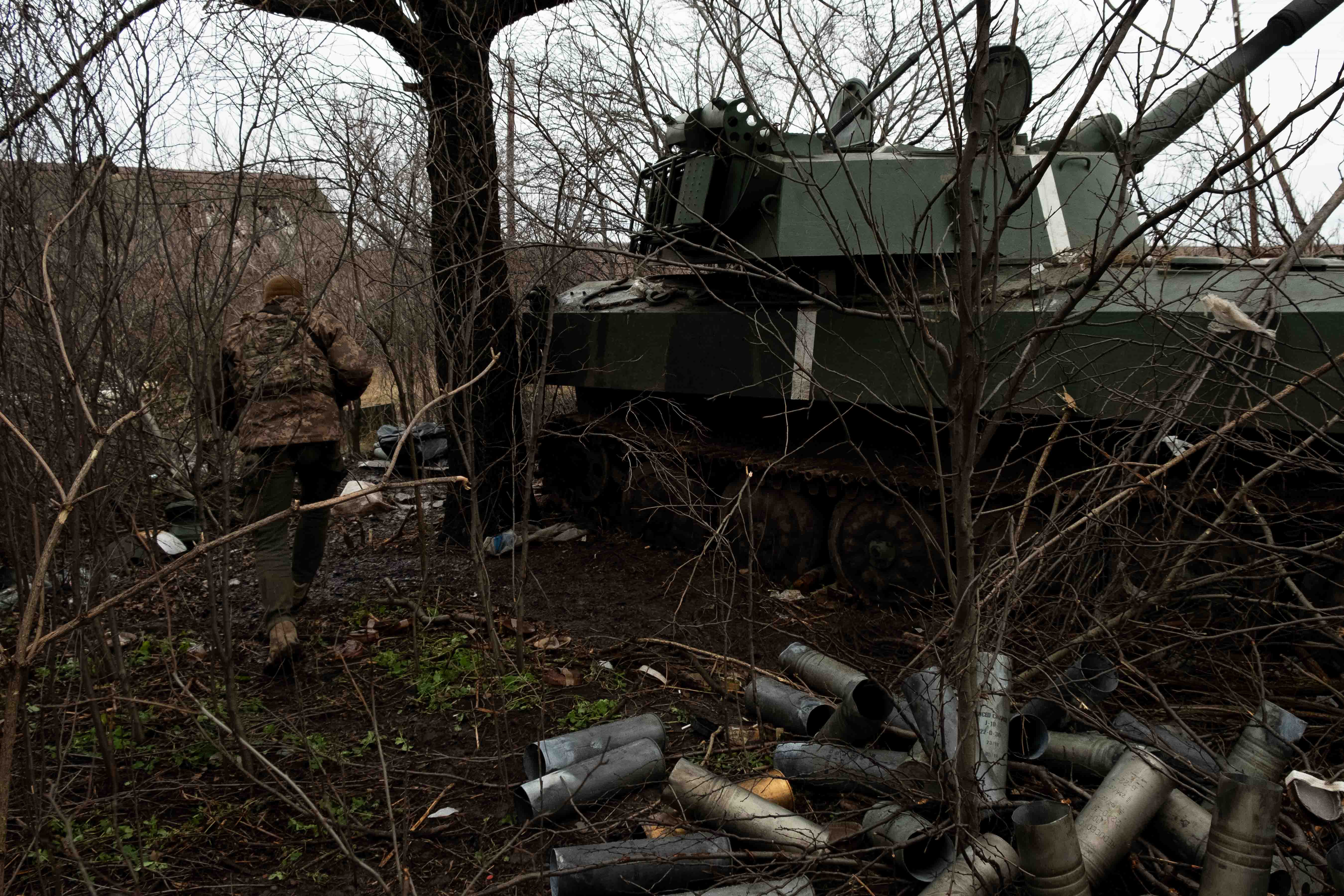
Ukraine tried to launch the production of artillery ammunition in 2018, four years into the war in the Donbas. That attempt failed, due to suspected corruption.
Back then, Bezpeka, a state enterprise then operating under the Economy Ministry, was tasked with buying ammunition production equipment for state factories. It sought to buy equipment for Ukroboronprom, Ukraine's state-owned arms manufacturer, recently rebranded as Ukrainian Defense Industry as part of corporate reform. The equipment would allow Ukroboronprom to start producing 152mm shells.
Bezpeka ordered the equipment from an American contractor, Gray Fox Logistics, that never delivered the order. Ukraine won arbitration against the company in 2020 and is yet to receive the $8.3 million it prepaid for the order – but it lost valuable time. Law enforcement opened a probe into the head of Bezpeka, alleging he and a deputy economy minister plotted to give the contract to the U.S. company while knowing it couldn't deliver the equipment. Bezpeka's head is suspected of treason, abuse of office, and theft.
While waiting for the American equipment, in 2018, Ukraine ordered 152mm shells from a Ukrainian private company Rubin. It delivered low-quality products, which weren't approved by the Defense Ministry. These were Ukraine's only attempts to launch mass production of ammunition before the 2022 invasion.
So when Russia started its all-out war, Ukraine didn't have reliable ammunition production pipelines and had little left in stock.
Meanwhile, the closest possible sources of ammunition – the EU and the UK – were also short on it.
After years of defense budget cuts and a strategy of keeping ammunition stocks low ever since the Cold War, the EU had little to offer.
According to Admiral Rob Bauer, chairman of the NATO military committee, he told member states' foreign ministers in mid-March 2022: "We deliver from half-empty warehouses. You have to refill it very quickly."
"NATO won't be able to provide Ukraine with lasting support if the war goes on for long," he recalled saying back then.
Officials and experts in the United Kingdom and Germany later admitted that their own countries only had enough ammunition to last for mere days of high-intensity fighting.
Reluctant to start helping
The West did not rush to start sending arms to Ukraine to help repel Russian aggression. It took days for politicians to decide and weeks to deliver the first batches of Soviet-style military aid to Ukraine, according to diplomats and military sources.
There were a few reasons for the delays.
One was the fear that Ukraine would quickly fall and the arms and ammunition provided by the West would end up in Russian hands, said two high-level Ukrainian diplomatic sources.
Additionally, they said, the EU was scared that Russia would see Europe as a party to the conflict.
"That's why they didn't want to help us for a very long time, despite the fact that Russia immediately accused the West of being a party to the war," according to another source close to Ukraine's Defense Ministry.
The EU defense industry proved to be more farsighted than politicians.
Nexter, a French munitions company, claims to have bought a few hundred tons of gunpowder a few days after the full-scale Russian invasion.
"We were in constant talks with the French government, especially with its Defense Ministry, which was well aware that the need for ammunition would increase," said Gabriel Massoni, a spokesperson for Nexter.
According to NAMMO, a Norwegian-Finnish munitions company, it bought extra raw materials days after the invasion. They also claim to have alerted authorities how difficult scaling up production quickly would be, given supply chain issues caused by the Covid-19 pandemic. The company got its first ammunition production contract only about a year later.
Camille Grand, who served as NATO's assistant secretary general for defense investment until November 2022, said: "We were under the impression that the war would not last long."
Taking a lifetime to act
Even upon realizing the scale of ammunition shortages, the leadership of the EU and its member states proved to be slow in tackling them.
At the first Ramstein summit, a Ukraine-focused meeting of allied countries at an air base in Germany, on April 26, 2022, the allies decided to give the first big batch of weapons to Ukraine.
"It was very tough before the Ramstein talks, and only after did it start moving at least in some direction, and we started receiving the first pieces of (U.S.-made and provided) M777 and M119 howitzers, which came in together with ammunition," a Ukrainian military source said.
However, it is not known whether the looming ammunition shortage was addressed at the summit.
The first notable attempt to find a solution came two days later, at NATO's semi-annual meeting of national armaments directors. There, some member states, for the first time, aired concerns that ammunition stocks could run out, according to Grand, a former top NATO official.
Around that time, it finally became clear to Western leaders that modern warfare still requires high volumes of ammunition despite advances in military technology, according to a source close to Ukraine's Defense Ministry. "That was a shock to them," he said.
EU unable to keep up
Soon after the start of the invasion, it became obvious that Ukraine was using ammunition much faster than EU countries were able to produce it.
According to the Kyiv Independent's calculations based on publicly available information and sources, Ukraine is using at least five times as much ammunition as the EU members are able to produce. By mid-April, it became clear that the European defense industry could not keep up with Ukraine's growing battlefield demands.
Meanwhile, the demand on the international ammunition market was growing as EU member states rushed to buy ammunition to replenish their emptied stocks.
This led to longer delivery times and rapidly rising prices. It also made Ukraine compete for ammunition and industrial materials like gunpowder on the European market.
"The current peak capacity of the ammunition-producing industry will probably be reached soon," Dutch Defense Minister Kajsa Ollongren wrote to the House of Representatives on April 29, 2022.
On Sept. 27, 2022, arms producers were, for the first time, invited to meet arms buyers at NATO's headquarters.
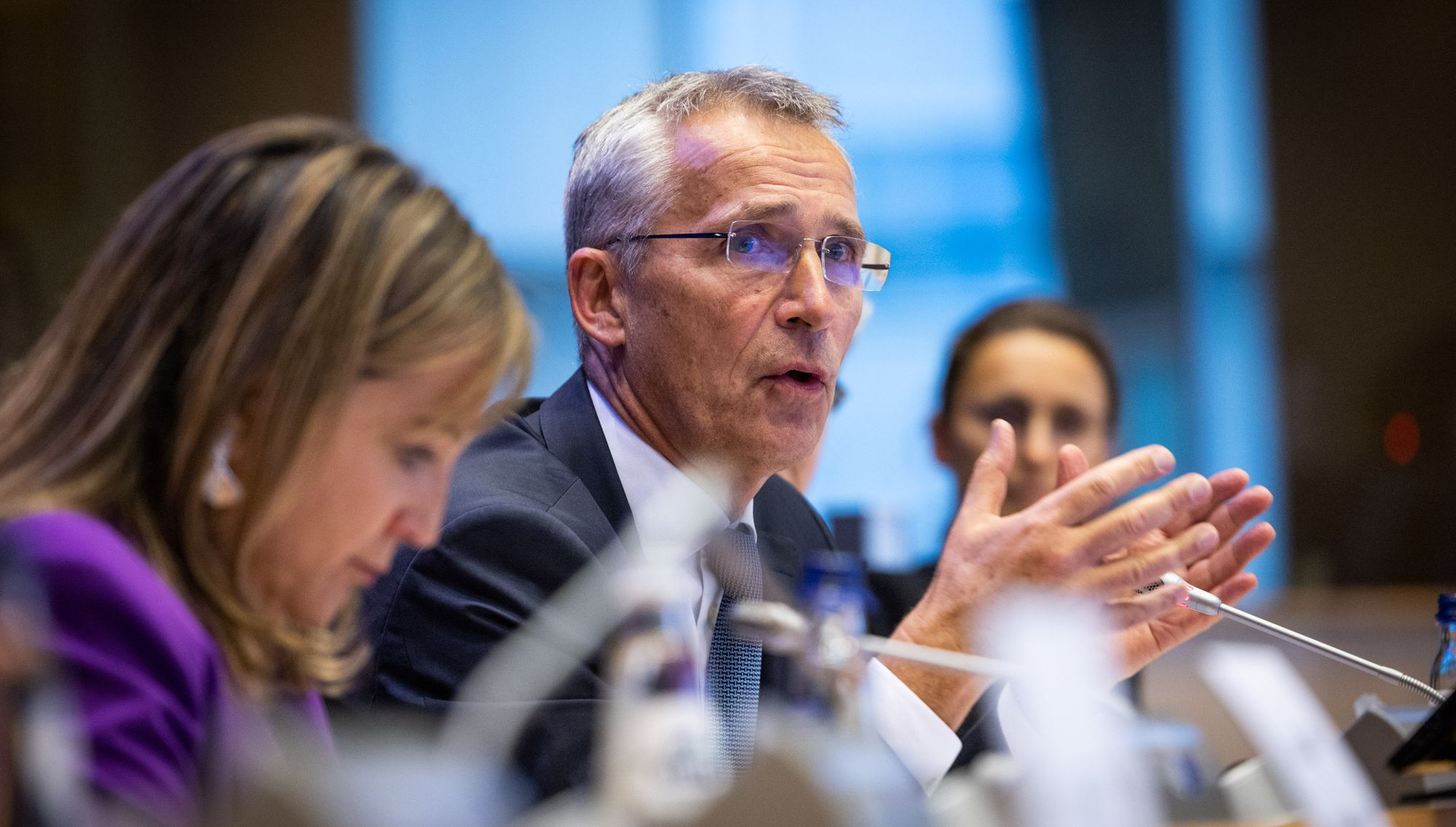
"This war could go on for a long time," NATO Chief Jens Stoltenberg told the audience. "That is why we must be prepared to continue to support Ukraine for the long term. That is why we also need to increase production."
The meeting took place seven months into the full-scale war, in the middle of Ukraine's attempt to push Russians back from Kherson Oblast and following the successful counteroffensive in Kharkiv Oblast.
By September, ammunition stocks in Ukraine were rapidly coming to an end. At that time, Ukraine's mortars and artillery fired two rounds for each 100 shots by Russia, according to a high-level source in the army.
And yet, there was still no political solution among EU member states to ammunition shortages.
The November inventory of the ammunition stocks of NATO countries found shortages in 155mm and 120mm calibers – the two most-used ones on the battlefield in Ukraine. It also revealed chaos in the member states' warehouses.
"Some member states had no idea how much stock they had and had to count it manually," said an official who was involved in the inventory.
Forced to save up ammunition
Artillerymen in Ukraine say they have to use their artillery like sniper rifles, firing precisely at targets, instead of as intended – with sustained barrage artillery fire that can hit multiple targets at once.
"It is normal to attack a group of enemy infantry with 15 to 20 shells. But if we do it this way, we won't have any ammunition to strike the next group," said an artilleryman with the callsign Haiduk. He operates a Soviet-era D-30 howitzer, which uses 122mm shells, the ones both the West and Russia are chasing after around the world.
Multiple soldiers told the Kyiv Independent they receive up to 15 shells a day when they are in defense, which is only enough to effectively repel one Russian attack.
In their turn, NATO officials believe Ukrainian soldiers use up way too much ammunition by operating new, modern, and precise artillery in an old-fashioned manner, a source in Ukraine's Ministry of Defense said.
NATO artillery is indeed more precise than the Soviet ones, which is supposed to save up a fair portion of ammunition. However, Western weapons constitute only around 30% of Ukraine's arms, according to Ukroboronprom's spokesperson, while the biggest shortages are experienced with Soviet-style calibers.
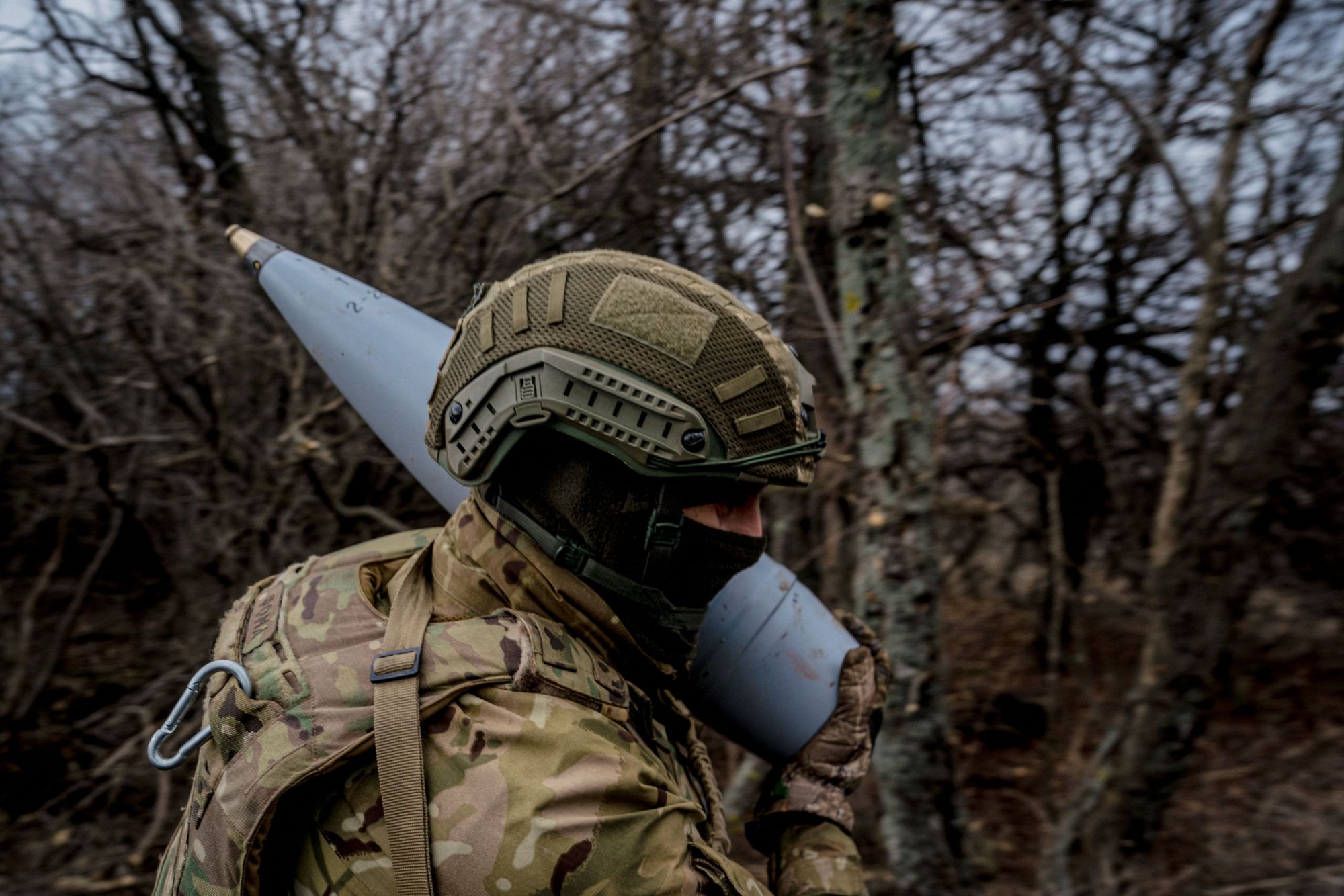
Soldiers on the ground say they can't spend less ammunition. One reason is that Western arms often arrive in Ukraine without automatic fire control systems, sights, or navigation, which could save up to around 20% of ammunition, according to the Kyiv Independent's soldier, volunteer, and expert sources.
"We receive weapons without access to technology," said Daria Kaleniuk, co-founder of Anti-Corruption Action Center (AntAC), which, since Russia's full-scale invasion, has also been advocating for arms supplies. "They are very much afraid that these technologies will be received by the enemy, that we won't protect them."
Western ammunition also often comes with temporary shooting tables or none at all, which means soldiers have to do the math themselves. Moreover, the weight indicated on ammunition is often incorrect, which is why soldiers are forced to weigh munitions themselves.
Taras, a mortar battery commander, bought industrial scales and started a Microsoft Excel spreadsheet to calculate the ammunition's trajectory.
"I will be frank, here on the front line, we don't have much time for these kinds of things," he said.
Yet they have to make time for calculations. Otherwise, soldiers risk hitting their own infantry when supporting their advances.
A ‘zoo’
The fragmented standards in the EU in arms and ammunition make soldiers struggle to navigate through dozens of ammunition types.
EU ammunition and arms are often not compatible: A 155mm shell for a German howitzer won't fit the Italian launcher of the same caliber, for instance.
Europe produces a total of around 170 different weapon systems, from aircraft to air defense, according to Admiral Bauer, chairman of the NATO military committee. There are 16 different 155mm shells in Europe alone.
Ukraine receives ammunition from everywhere, and it's extremely difficult to navigate through it, soldiers say, calling the wide range of ammunition a "zoo."
Mortar battery commander Taras says he has so far received 30 types of 120mm caliber ammunition: "They all differ in their tactical and technical characteristics."
Once the soldiers run out of one type of ammunition, they have to change the settings for their mortars and artillery every time they receive a new batch of munitions, which causes delays or disruptions in military operations.
"I wish it was more or less unified and systematized," Taras said.
EU members' self-centrism
EU member states' fixation on protecting their national interests has also gotten in the way of Ukraine getting prompt ammunition supplies.
When NATO initiated inventories, some countries were reluctant to share information about their ammunition stockpiles. Political and diplomatic sources said that one reason was the low level of trust in certain fellow member states and failure to meet ammunition stock benchmarks set by NATO – something they allegedly didn't want to reveal.
Some countries also prioritized making shells for themselves, rather than for Ukraine, according to a diplomat source.
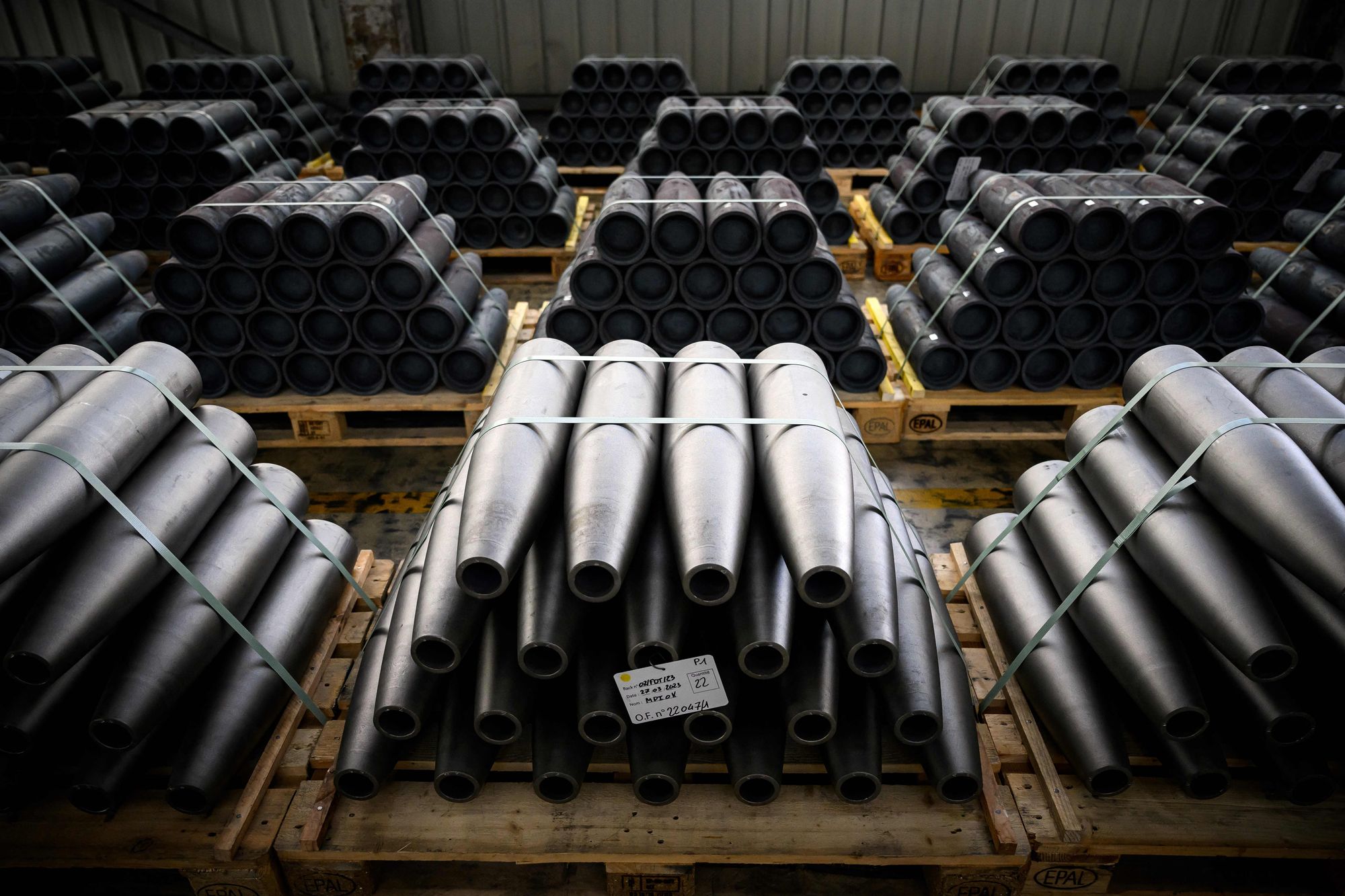
One good example is France.
In June 2022, four months into the full-scale war, French President Emmanuel Macron ordered his country's defense industry to increase production – but not for Ukraine's benefit. The move was mainly intended to shore up French stockpiles, said a French diplomat who spoke on condition of anonymity.
"France's policy is similar to that of the Americans. First, we take care of our own supplies, then we help others," he said.
What also didn't help the joint EU effort is that each state protects and promotes its own arms companies, which are often fully or partially state-owned.
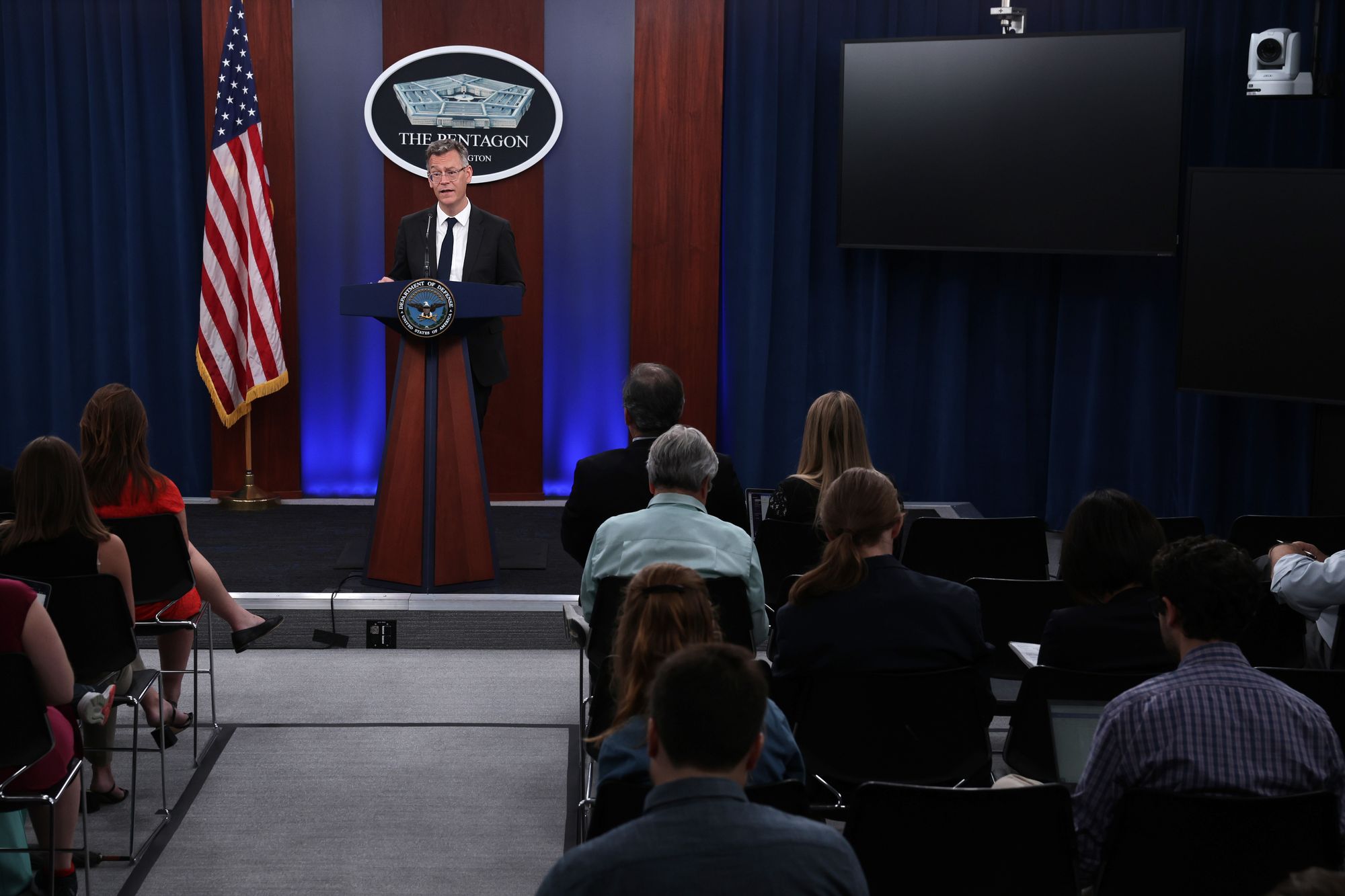
In mid-February, Estonia's leadership lost their patience.
Four officials locked themselves in the Defense Ministry and didn't leave for a couple of days until they had come up with a proposed solution: EU members should jointly purchase ammunition, like they did with vaccines during the coronavirus pandemic.
"If we hadn't come up with this idea, Ukraine would have run out of ammunition," said policy director of the Estonian Defense Ministry, Tuuli Duneton, a co-author of the plan.
Based on the Estonian pitch, the European Commission drew up a three-step plan. First, give Ukraine 1 billion euros in ammunition from their current stocks. Then, jointly purchase ammunition for Ukraine worth another 1 billion euros. And finally, pump up industries with investments to produce 1 million rounds of ammunition within a year.
On March 20, more than a month and a half later, the EU set the plan in motion. A larger flow of ammunition to Ukraine seemed within reach.
"And then nothing happened," said Nico Lange, a former official with the German Defense Ministry.
France wanted to keep the money within the EU and only buy locally. It would have been a reasonable approach in peace time, said a source in Ukraine's arms industry, but not in wartime.
"The war is here and now. A soldier doesn't care…he needs a shell," he said.
Germany, Poland, the Netherlands, and the Baltic States disagreed with France and were ready to buy from wherever they could get it the quickest.
In early May, Europe finally reached a compromise: Ammunition must be bought collectively from producers in the EU or Norway, but may also come from elsewhere.
On July 7, after two months of negotiations, the EU decided to invest an additional 500 million euros to boost European ammunition production capacity.
This should help the European industry produce 1 million shells by March 2024, according to the EU's Internal Market Commissioner Thierry Breton. That also won't be enough – in March, Ukraine's defense minister asked the allies to provide at least 250,000 artillery shells per month to aid critical shortages.
Though approved, the plan is facing backlash. According to a diplomat who spoke on condition of anonymity, most member states are against it as they see it as an attempt to transfer the members' national defense competence to Brussels.
EU industry’s outcry
Governments aren't the only ones who aren't happy.
European munitions makers refuse to scale up production without state guarantees. They say they are afraid to have to shrink back if the war ends soon. Thus, they demand 10-year-long contracts – something officials are reluctant to give.
According to annual reports of arms giants NAMMO, Rheinmetall, Saab, and MBDA, they invested hundreds of millions of euros in 2022. They mostly spent it on improving their capacity: buying more raw materials, machine maintenance, and hiring new staff.
The German arms producer Rheinmetall moved to expand its capacity and build new production facilities, according to a spokesperson.
But most companies claim that to build new production lines and factories, they need long-term contracts with their governments.
"The industry can't pay for it all, then there's no profit left over. We can't produce on the speculation that somebody will buy it," said Morten Brandtzaeg, the director of NAMMO.
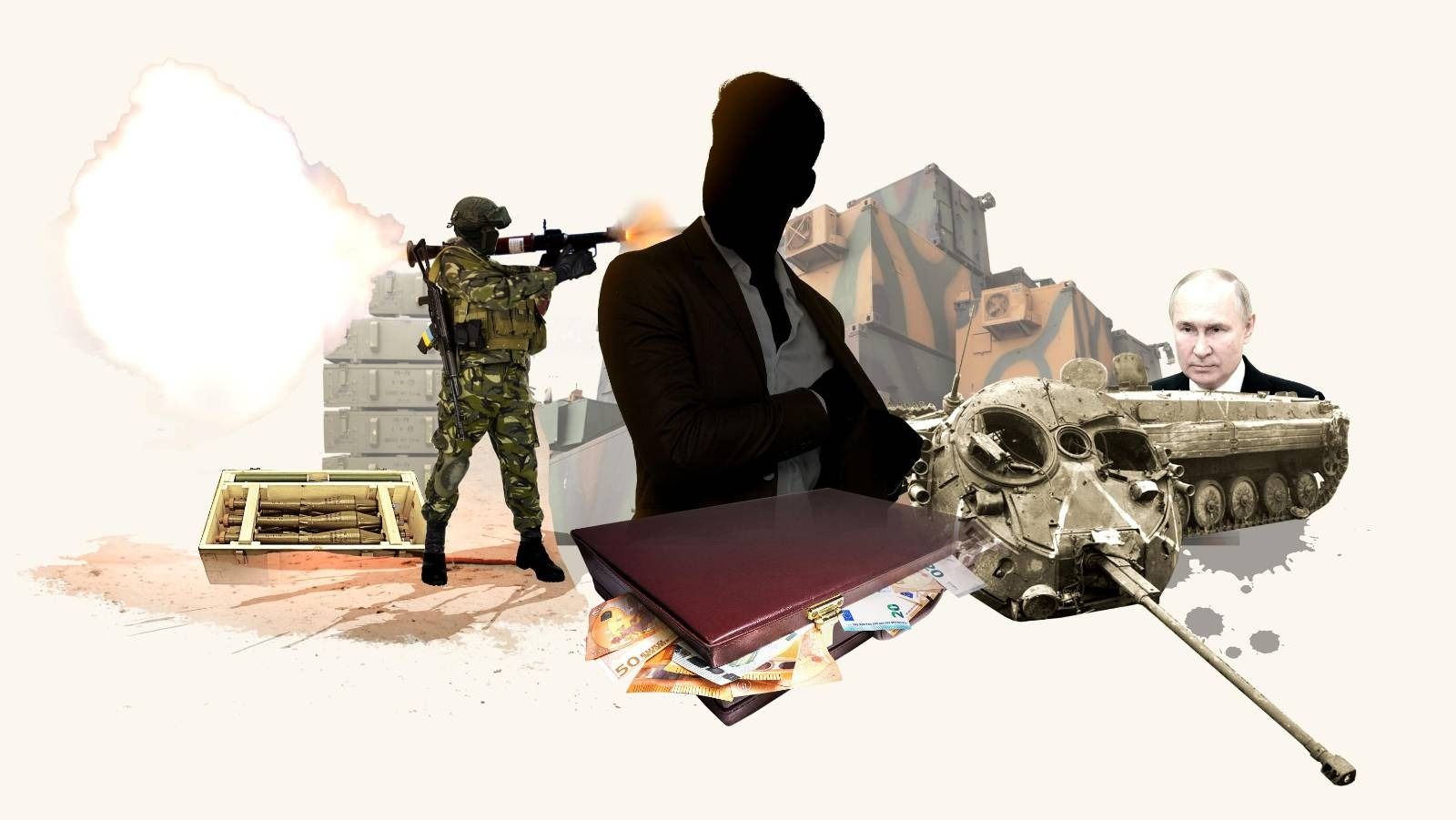
The reasons why EU member states are reluctant to sign long-term contracts vary from the unwillingness to increase military spending to the belief that the governments are already helping the industry enough, to the yearly nature of state budgets that make it difficult to make longer-term deals.
"This is a failure of policy, leadership, and will, more than anything else," said General Richard Barrons, a retired British Army officer, criticizing European politicians' ability to mobilize the industry.
"They do not feel like they are at war. They are just working in the bureaucratic machine," Andriy Zagorodnyuk, defense minister of Ukraine in 2019-2020, told the Kyiv Independent.
Ukraine’s industry struggle
The problems Ukraine's arms industry faces are similar to those in the West, but combined with the risk of Russian air strikes that target defense industry sites.
Several Ukrainian state and private companies managed to launch mass ammunition production around April 2022 and then scale it up. But it wasn't due to a centralized effort from the government.
There were no ammunition procurement contracts with the state ahead of the launch, said Vladyslav Belbas, director of private company Ukrainian Armor, which produces 60mm mortar bombs. A source in Ukraine's state-owned arms manufacturer confirms it: "It was our own initiative to start production."
Due to the regulations imposed by martial law, the Kyiv Independent can't reveal the exact number of rounds of ammunition produced by Ukraine monthly. It covers less than 15% of what Ukraine's Defense Ministry claims the country needs to meet its battlefield needs.
"Do we meet the needs of the Armed Forces? Of course not. Because it is impossible to launch from scratch and immediately deliver the amount needed by the military," a source in one of Ukraine's arms producers said.
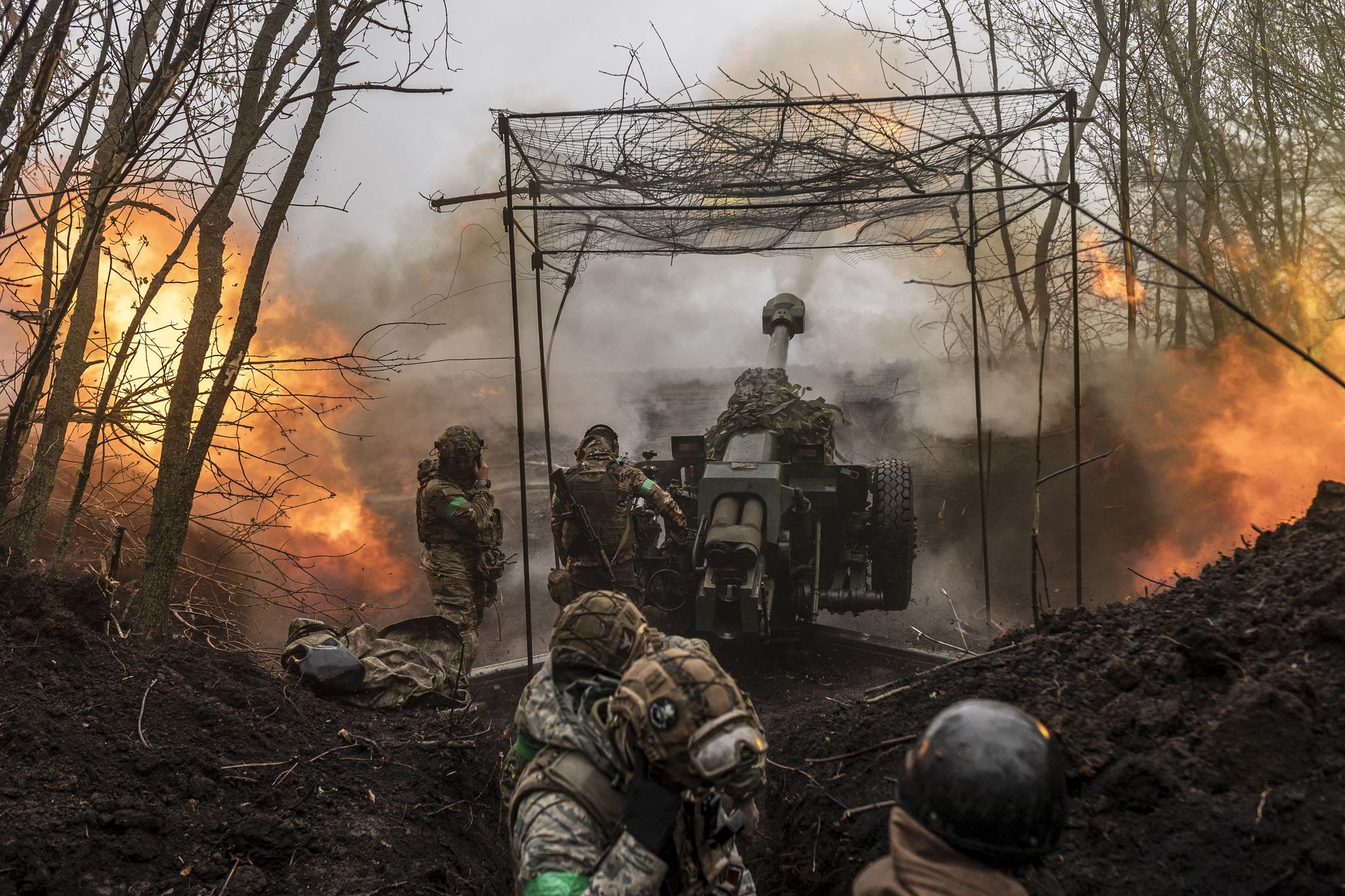
Ukrainian ammunition producers, both state-owned and private, told the Kyiv Independent they want at least three-year-long contracts to ramp up production. Their current contracts last until the end of the year.
The Defense Ministry hasn't replied to the Kyiv Independent's request for comments for this story as of publication time. (In the written response that came later the Ministry, among other things, said: “All Ukrainian ammunition producers are contracted by the Ministry of Defense for the entire scope of their confirmed capabilities. We only buy abroad what is not produced domestically in Ukraine.”)
In October, Ukrainian Defense Industry (former Ukroboronprom), together with private producers, anti-corruption NGOs, and analytical centers, drafted a law on prioritizing the defense industry.
Among other things, it creates preferential bank loans and state subsidies, government investment into renovation and modernization projects, tax and customs benefits, and cancellation of debts and fines, according to the draft document seen by the Kyiv Independent. The bill is under consideration by the parliamentary committee on national security.
As part of the bill, the industry wants the Defense Ministry to prioritize buying locally-produced ammunition over importing from abroad. Currently, even the small amounts of ammunition produced domestically sometimes end up sitting in storage waiting to be delivered to the battlefield – often due to poorly organized procurement and logistics, according to the Kyiv Independent's sources in the industry.
Production revival
Both Ukraine's state-owned and private enterprises are working around the clock to try and meet the military's demands.
State-owned Ukrainian Defense Industry is seeking alliances with European companies to produce ammunition jointly. Some firms did jump in, but their input is very limited, according to a high-profile source in Ukraine's government.
To scale up ammunition production quicker, Ukrainian Defense Industry is striving for full-fledged joint ventures with Western companies. In May, Rheinmetall announced plans to create a joint venture with Ukroboronprom and co-produce selected Rheinmetall products in Ukraine.
This idea, however, does not yet have broad support. Due to the ongoing war involving Russian targeted air strikes, investing in Ukraine is a high risk few companies are willing to take.
"We're not involved at all in moving any production or knowledge to Ukraine, and we have serious reservations about this mode of operation," said a spokesperson for Nexter.
Ukraine's state arms manufacturer has another idea: It wants the West to include equipment for ammunition production in military aid packages. Ukraine wants to use it for both its own and joint production with foreign partners.
"It's the eternal dispute between giving a man a fish or teaching a man to fish. Give him a fish, and he will always be hungry," said a source in the Ukrainian Defense Industry.
Even if Ukraine gets the equipment it asks for, the source said it won't arrive until at least next summer since it takes substantial time to produce it.
Meanwhile, mortar battery commanders like Taras need ammunition here and now.
This project was supported by a grant from the Investigative Journalism for Europe (IJ4EU) fund.


Note from the author:
Hi there! It's Anna Myroniuk, the author of this story.
Together with colleagues from Estonia, Netherlands, France, and other countries, we have spent a few months looking into the causes of ammunition shortages in Ukraine. We found that the European Union's inability to ramp up ammunition production dramatically affects Ukraine's performance on the battlefield.
We have been digging into one of the world's most regulated and secretive industries to answer the question: Why, despite all efforts to tackle ammunition shortages one year into the full-scale war, there are still no working solutions?
I hope this story provided you with insights into where the interests of the EU's leadership, its member states, and their industries lie, how they clash, and what can be done to fix problems and make it work for the sake of both Ukraine and the West. If you like this piece, please consider supporting the Kyiv Independent.




